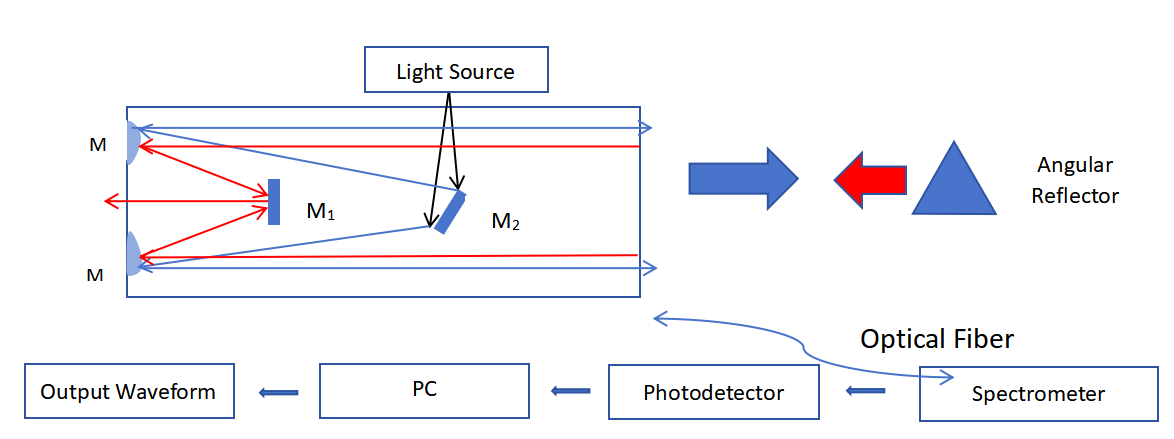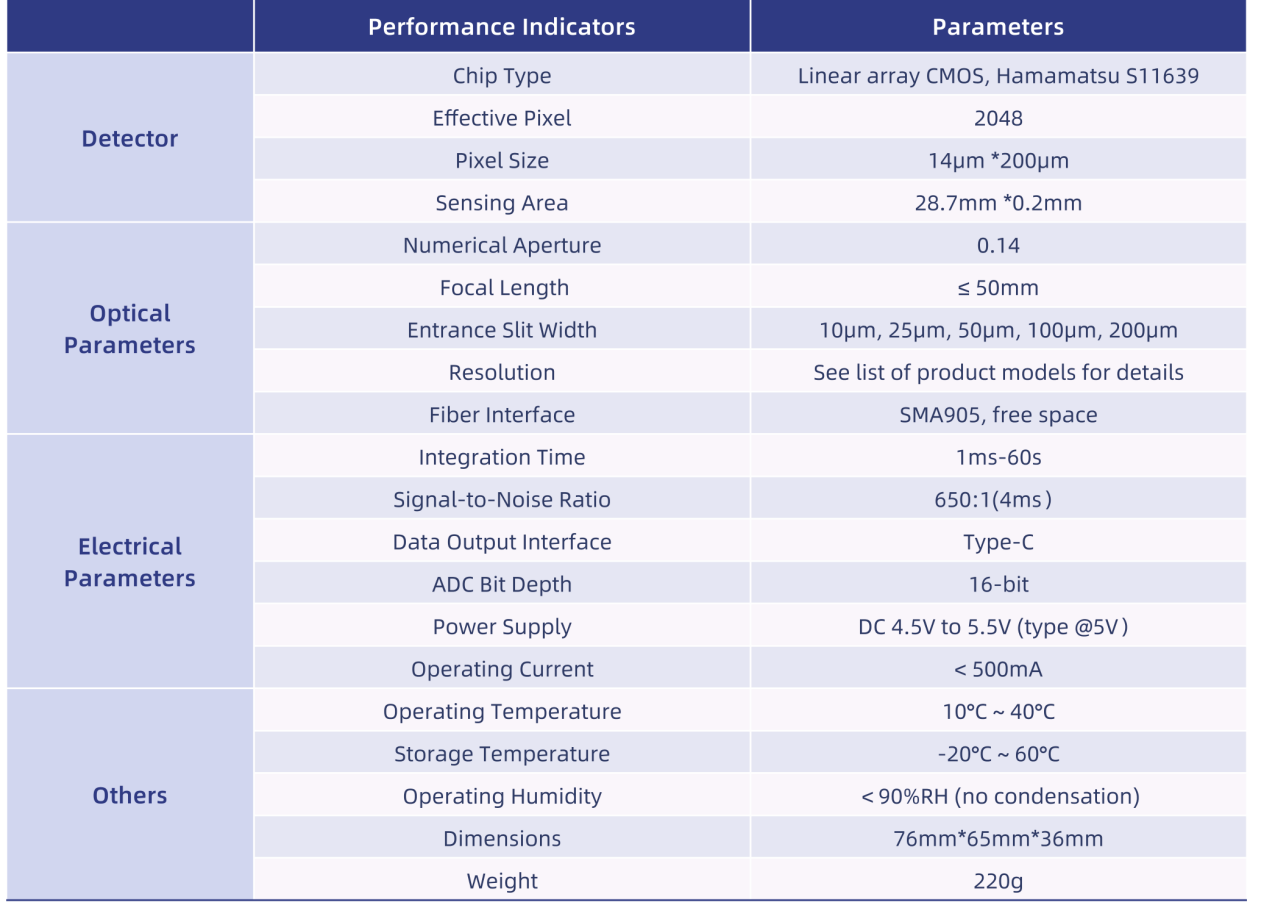Flue gas detection is an important branch in the application of spectrometers, primarily utilizing Differential Optical Absorption Spectroscopy (DOAS). DOAS is a spectroscopic monitoring technique based on the narrowband absorption characteristics of gas molecules in the air to identify gas components and deduce the concentration of trace gases from the narrowband absorption intensity. With its inexpensive and simple equipment setup and excellent monitoring capabilities, DOAS technology has been widely used in atmospheric monitoring abroad.
Fiber optic spectrometers are widely used in the visible and ultraviolet bands to monitor standard pollutants such as O3, NO2, SO2, and benzene compounds. The types of measurements are limited to the gas components with narrow absorption spectral lines in these bands, but they are very effective for measuring highly reactive gases in the atmospheric stratosphere such as OH, NO3, and HONO. Compared with other traditional optical monitoring methods, fiber optic spectrometers can simultaneously monitor multiple components, but their monitoring is greatly affected by water vapor and aerosols.
Principle of Flue Gas Measurement by Fiber Optic Spectrometer:
According to the Lambert-Beer law:

Where:
A is the absorbance,
T is the transmittance (the ratio of the emitted light intensity to the incident light intensity),
K is the molar absorption coefficient, which depends on the properties of the absorbing substance and the wavelength
λ of the incident light,
c is the concentration of the absorbing substance, in mol/L,
b is the thickness of the absorbing layer, in cm.
Based on this, the concentration of various pollutants can be monitored by the different degrees of light absorption. However, before application, the effects of Rayleigh scattering and Mie scattering present in the atmosphere must be considered to correct the formula to some extent.
To eliminate the effects of Rayleigh and Mie scattering, filtering techniques are usually employed mathematically to separate the spectral variations caused by molecular absorption included in the atmospheric absorption spectrum. This mathematical treatment is based on the premise that the variation in optical thickness caused by Rayleigh and Mie scattering changes slowly with wavelength, whereas the variation caused by molecular absorption changes rapidly with wavelength. Therefore, the spectral variations due to scattering are termed "broadband" spectra (low-frequency component), while those due to molecular absorption are termed "narrowband" spectra (high-frequency component). A high-pass filter is used in the calculation to separate out the rapidly changing "narrowband" spectra with wavelength. The separated molecular absorption spectrum is fitted with a reference spectrum to calculate the concentration of light-absorbing substances present in the atmosphere being measured. This is the basic idea of the Differential Optical Absorption Spectroscopy (DOAS) method.
Application Scope:
1) Suitable for analyzing flue gas components in high humidity, low SO2, and ammonia slip conditions.
2) Measurement of the efficiency of various desulfurization, denitrification, and VOC removal equipment.
3) Determination of emission concentrations of SO2, NH3, NO, NO2, and H2S from various boilers and industrial furnaces.
4) Measurement of emission concentrations of olefins, aromatics, aldehydes, ketones, mercaptans, sulfides, amines, amides, and heterocyclic organic compounds in exhaust gases from various production processes.
Working Process:
1) The gas enters the gas chamber through the flue gas pretreatment device and exits from the flue gas outlet.
2) Ultraviolet light passes through the gas chamber (containing gases of different types and concentrations) and is received by the spectrometer, resulting in a corresponding reduction in the number of photons in various bands of the spectrometer.
3) Changes in the number of photons can be reflected as a photon count spectrum on the computer or directly converted into electrical signals for data processing.
Data processing involves real-time processing of these data through effective algorithms to determine the concentration of various gas components, which are then displayed on the display terminal.
Relevant Literature:
By selecting the following wavelengths and using formula derivation, the specific concentration of gases can be determined:
SO2: 271.98 nm
NO2: 231.46 nm
NO: 225.94 nm
NH3: 214.63 nm
The diagram below shows the basic structure of the DOAS system, where the optical structure is a simple filter:

In this system, the spectrometer is recommended to use SR50C miniature fiber optic spectrometer of JINSP, which has a wide spectral range, high signal-to-noise ratio and high luminous flux, and at the same time is small and lightweight, which is suitable for use in a variety of environments. The following are the specific parameters of the product:

At the same time, JINSP provides professional after-sales technical services, DOAS system construction and data processing can be provided by Forensic's after-sales service. Choose JINSP, choose better service.
For more details, please visit: Best SR50C miniature spectrometer manufacturers and suppliers | JINSP (jinsptech.com)
Post time: Jul-19-2024

